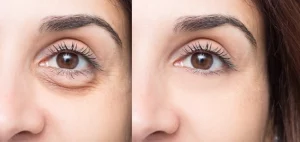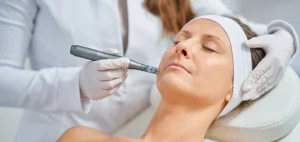There is an extra growth of extremely fine and downy hair on our faces, mostly common among women, called peach fuzz or more appropriately vellus hair.
These peach fuzz a.k.a vellus hair have been leading most people into becoming insecure and developing low self-esteem; while they also tend to get denser as we age, or at times due to an illness called polycystic ovary syndrome.
You surely must have come across “Dermaplaning” if you have ever tried surfing the internet in search of treatments that can help females with facial hair removal. It can be introduced as an instant treatment that involves the shaving of female facial hair using a specifically designed dermaplaning razor.
While this dermaplaning treatment has proven to be quite effective when it comes to attaining smooth hairless skin, and its non-invasive nature makes it even better – However, Dermaplaning does have its adverse effects too; which might not occur every time, but can be seen frequently.
What is dermaplaning and how does it work?
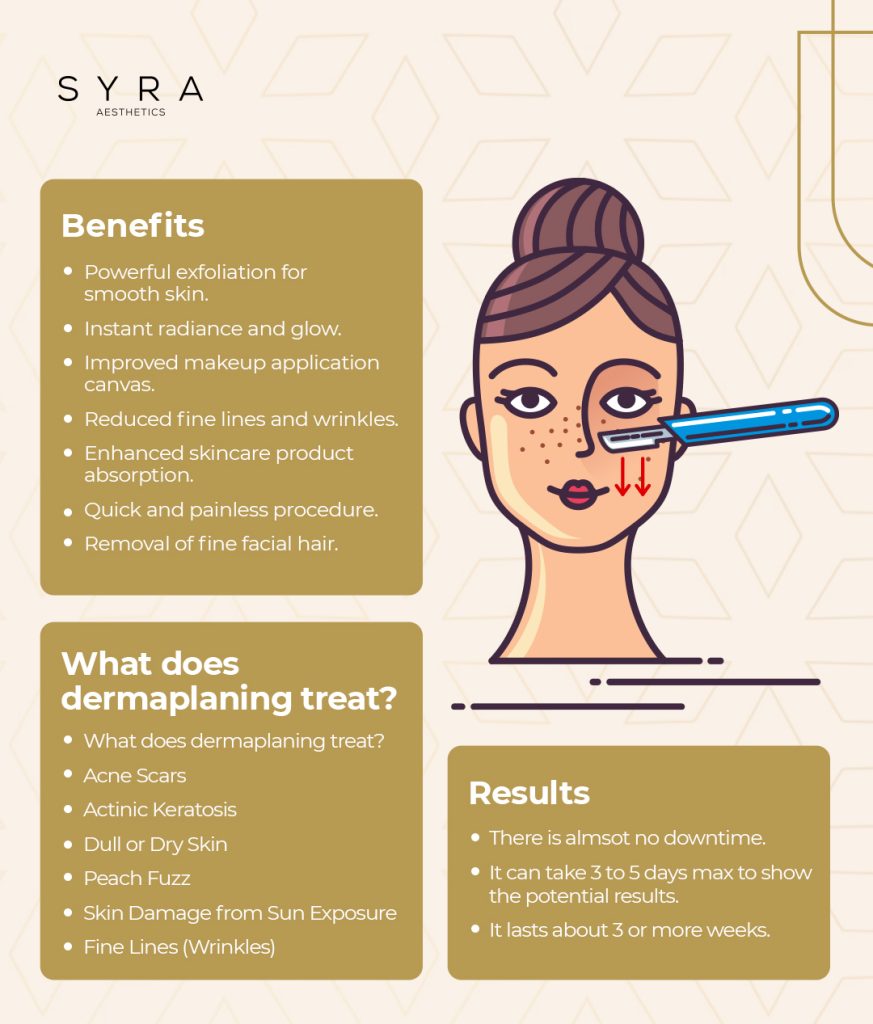
Dermaplaning is a cosmetic dermatology procedure that involves the manual exfoliation of the skin’s surface using a sterile surgical scalpel. During the process, a trained professional carefully glides the blade across the skin at a precise angle to remove the outermost layer of dead skin cells along with fine vellus hair (commonly known as peach fuzz). This not only smooths the skin’s texture but also creates a brighter and more even complexion.
According to the American Society for Dermatologic Surgery, dermaplaning can improve skin brightness by up to 35%. Dermatologists often describe it as a form of physical exfoliation that triggers cell regeneration, making skincare products absorb more effectively and makeup application smoother.
Dermaplaning actually has its roots in the 1960s, when it was developed as an offshoot of surgical shaving techniques performed by dermatologists. Over time, it transitioned from a strictly medical practice into a popular cosmetic treatment for those seeking instant, non-invasive skin rejuvenation.
Is dermaplaning good or bad for acne?
Dermaplaning can be good for mild acne concerns, such as improving skin texture, reducing the appearance of shallow acne scars, and allowing skincare products to penetrate more effectively. However, it can be bad for active or inflamed acne, because the scalpel may irritate breakouts, spread bacteria across the skin, and trigger more inflammation.
Does dermaplaning cause acne?
Dermaplaning itself does not directly cause acne. The procedure works by removing dead skin cells and vellus hair from the surface of the skin, which in fact can make the skin appear smoother and allow skincare products to absorb more effectively. However, in some cases, people may notice breakouts after dermaplaning due to external factors rather than the treatment itself.
Common reasons why breakouts may occur after dermaplaning include:
- Irritation: Aggressive scraping or improper technique can irritate sensitive skin and trigger acne flare-ups.
- Pore clogging: Using non-sterile tools or applying comedogenic (pore-clogging) skincare products afterward can block pores and lead to breakouts.
- Bacteria spread: If the skin is not cleansed properly before treatment or if the tools are contaminated, bacteria may spread across the skin and contribute to new pimples.
Does dermaplaning cause fungal acne?
No, Dermaplaning does not cause fungal acne. It primarily addresses surface-level skin concerns and does not affect fungal acne conditions.
Does dermaplaning cause cystic acne?
No, Dermaplaning does not directly cause cystic acne. However, any irritation or pore-clogging post-treatment could potentially exacerbate acne.
Can dermaplaning help with acne scars?
Yes, dermaplaning can help reduce the appearance of mild acne scars, particularly shallow or surface-level marks. By exfoliating the outermost layer of dead skin cells, dermaplaning promotes smoother skin texture and enhances cell turnover, which can make scars look less noticeable over time. It also improves the absorption of topical treatments, such as serums containing vitamin C or niacinamide, that target pigmentation and scarring.
However, dermaplaning is not effective for deeper scars, such as pitted or ice-pick scars, since it only works on the skin’s surface. For these types of scars, more intensive treatments like microneedling, chemical peels, or laser resurfacing are usually recommended by dermatologists.
How to prevent breakouts after dermaplaning?
- Cleanse gently: Use a mild, non-foaming cleanser to avoid stripping the skin barrier.
- Choose non-comedogenic products: Stick to lightweight moisturizers and serums that won’t clog pores.
- Avoid harsh activities for 24–72 hours: Skip retinol, salicylic acid, glycolic acid, and other strong exfoliants immediately after treatment.
- Apply sunscreen daily: Freshly exfoliated skin is more sun-sensitive, so broad-spectrum SPF is essential.
- Hands off: Avoid touching your face to reduce the transfer of bacteria.
How to treat acne or bumps after dermaplaning?
- Spot treat with gentle activities: Once the skin has calmed (usually after 48–72 hours), use targeted acne treatments like benzoyl peroxide or adapalene as advised by a dermatologist.
- Soothe inflammation: Apply calming ingredients such as aloe vera, centella asiatica, or niacinamide to reduce redness.
- Moisturize regularly: Hydration supports skin barrier repair and minimizes irritation.
By combining proper prevention steps with gentle treatment, most people can minimize post-dermaplaning breakouts and enjoy smoother, brighter skin without setbacks.
What to do after dermaplaning?
After dermaplaning, the skin is freshly exfoliated and more sensitive, which means it needs gentle care and protection. Proper aftercare helps maintain results while reducing the risk of irritation or breakouts.
- Avoid direct sun exposure: Fresh skin is more prone to UV damage, so limit time outdoors for the first 24–48 hours.
- Always use SPF: Apply a broad-spectrum sunscreen (SPF 30+) daily, even indoors, to protect against sun sensitivity.
- Simplify your skincare routine: Stick to gentle, non-comedogenic cleansers, moisturizers, and serums.
- Cleanse gently: Use a mild, fragrance-free cleanser to wash your face without stripping moisture.
- Moisturize well: Keep the skin hydrated with a soothing, non-comedogenic moisturizer.
- Stay hydrated: Drinking water supports healing and maintains skin health from the inside out.
- Avoid harsh ingredients: Skip scrubs, exfoliants, retinoids, salicylic acid, glycolic acid, and strong activities for at least 48–72 hours.
- Skip makeup for 24 hours: Allow skin to recover without pore-clogging products.
- Avoid chlorinated pools and saunas: These can irritate freshly exfoliated skin.
- Avoid touching your face: Helps reduce bacteria transfer that may cause breakouts.
- Check for broken skin: If minor cuts occur, keep them clean and avoid applying active skincare on those areas until healed.
How long after dermaplaning can I wash my face?
After dermaplaning, it’s recommended to wait at least 6 to 8 hours before washing your face. This allows the skin to recover and reduces the risk of irritation or sensitivity, especially if the procedure caused any minor abrasions or redness. When you do wash your face, use a gentle cleanser and avoid harsh scrubbing or exfoliation.
What to put on your face after dermaplaning?
After dermaplaning, the skin is freshly exfoliated and more sensitive than usual. The best approach is to use soothing, hydrating, and non-comedogenic products that support skin recovery and protect the barrier.
- Gentle toner: Alcohol-free, soothing toners can refresh the skin without irritation.
- Snail mucin: Provides deep hydration and calming effects, making it ideal for post-dermaplaning skin.
- Hydrating face mask: A gentle, fragrance-free mask with calming ingredients (like aloe vera or hyaluronic acid) helps replenish moisture.
- Micellar water: A mild option for cleansing that won’t strip the skin barrier.
- Lightweight serums or moisturizers: Formulas with hyaluronic acid, niacinamide, or centella asiatica support hydration and barrier repair.
- Broad-spectrum SPF (SPF 30+): Essential to protect sensitive skin from UV damage after dermaplaning.
Can I exercise after dermaplaning?
It’s best to wait at least 24–48 hours before exercising after dermaplaning. Sweating too soon can irritate freshly exfoliated skin, increase redness, and allow bacteria from sweat to enter open pores, which may trigger breakouts. Once the skin has calmed, normal exercise can be resumed.
Should you moisturize before dermaplaning?
Yes, you should moisturize before dermaplaning, but lightly. A thin layer of moisturizer helps soften the skin and reduce friction during the procedure, making it easier for the blade to glide smoothly and minimizing irritation. However, avoid using heavy or oily products, as they may interfere with the treatment.
What to avoid after dermaplaning?
After dermaplaning, your skin is more delicate and sensitive, so certain products and activities should be avoided to prevent irritation, redness, or breakouts.
- Harsh skincare ingredients: Retinol, salicylic acid, glycolic acid, lactic acid, and benzoyl peroxide can cause stinging and irritation on freshly exfoliated skin.
- Physical exfoliants: Scrubs, cleansing brushes, or abrasive pads may damage the skin barrier.
- Fragrance-heavy products: Perfumed creams or toners can increase sensitivity and redness.
- Direct sun exposure: Freshly exfoliated skin is more vulnerable to UV damage — avoid tanning and always apply sunscreen.
- Hot environments: Saunas, steam rooms, and hot showers can aggravate redness and dryness.
- Chlorinated pools: Chlorine may irritate sensitive skin and delay healing.
- Heavy makeup: Foundation and other pore-clogging products should be skipped for at least 24 hours.
Touching your face: Reduces the risk of transferring bacteria to open pores.
Pros and cons of dermaplaning
| Pros | Cons |
| Instantly smoother and softer skin | Risk of skin irritation or redness |
| Removes peach fuzz (vellus hair) | Minor cuts or abrasions possible if done improperly |
| Improves skin brightness (up to 35%) | Temporary sensitivity to sun and products |
| Enhances absorption of skincare products | Potential post-treatment breakouts if aftercare is poor |
| Creates a flawless base for makeup application | Not suitable for active acne or very sensitive skin |
| Non-invasive and painless procedure | Results are temporary (lasts 3–4 weeks) |
| Can reduce the appearance of shallow acne scars | Requires repeated sessions for maintenance |
| Safe for most skin types when performed professionally | At-home dermaplaning increases risk of uneven results or infection |
What are the side effects of dermaplaning?
The side effects of Dermaplaning are mild and temporary. They may include:
- Redness: Some temporary redness of the skin immediately after the procedure.
- Sensitivity: Skin may feel more sensitive than usual, especially to touch.
- Dryness: Temporary dryness of the skin, which can be alleviated with moisturizer.
- Rarely, minor cuts or abrasions: If the procedure is not performed correctly or if the tools used are not properly sanitized.
Why do people regret dermaplaning?
Most people are happy with dermaplaning, but some regret it because of unexpected side effects or results that didn’t match their expectations. While the treatment can make skin smoother and brighter, not everyone’s skin reacts the same way.
- Breakouts or irritation: Sensitive or acne-prone skin may flare up after treatment.
- Redness and razor burn: Aggressive technique or unskilled providers can leave skin sore or inflamed.
- Uneven results: At-home dermaplaning or improper tools may cause patchiness.
- Exaggerated expectations: Some people expect dramatic scar removal or anti-aging results, which dermaplaning cannot deliver.
- Skin barrier disruption: Overdoing dermaplaning too often can lead to chronic dryness or sensitivity.
How to avoid regret with professional care
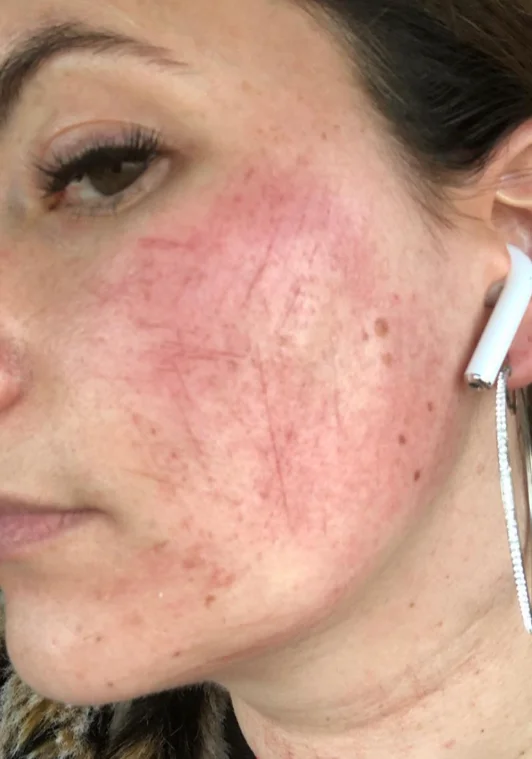
Regret after dermaplaning is often the result of improper technique, unsuitable skin type, or unrealistic expectations. Choosing the right professional and following correct guidance can help ensure a safe and positive experience.
- Choose a qualified provider: Look for licensed dermatologists or certified aestheticians with experience in dermaplaning.
- Check reviews and credentials: Patient testimonials and board certifications can indicate reliable expertise.
- Discuss your skin concerns upfront: Be clear about whether your main goals are texture, acne scars, or hair removal, so the provider can set realistic expectations.
- Ask about tool sterilization: Confirm that sterile, single-use or properly sanitized tools are always used.
- Follow aftercare instructions carefully: Professional advice on skincare products, sun protection, and activity restrictions is essential to avoid irritation.
- Avoid over-treating: Dermaplaning too frequently can damage the skin barrier — a professional will guide you on safe timing.
Does dermaplaning improve skin texture?
Yes, dermaplaning improves skin texture immediately by removing dead skin cells and fine vellus hair, leaving the skin smoother, brighter, and softer to the touch. The treatment also enhances product absorption and allows makeup to apply more evenly.
What should one consider before deciding to undergo dermaplaning?
Consider your skin type, potential risks, and benefits, and consult with a qualified skincare professional. For visuals like Dermaplaning before and after photos or to find the best medical aesthetics services in Manhattan, NYC, consider searching online directories or platforms specializing in aesthetic treatments. Always consult with a qualified professional for personalized advice on skincare treatments and post-procedure care.
Dermaplaning Before And After
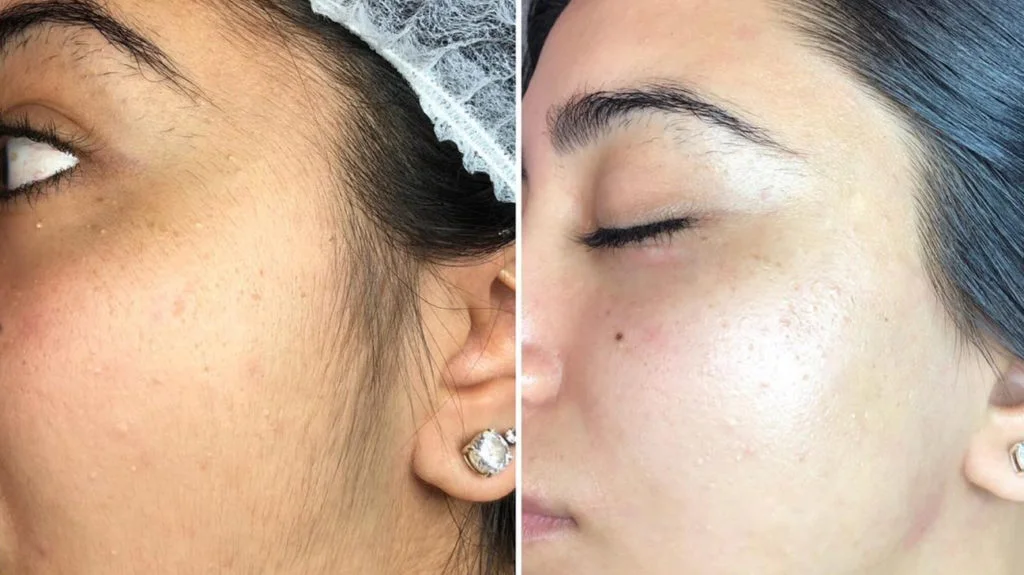
Where To Find The Best Medical Aesthetics Services in Manhattan, NYC?
For excellent Dermaplaning and medical aesthetics services in Manhattan, consider Syra Aesthetic, known for its specialized treatments and skilled practitioners. They offer personalized skincare solutions in a luxurious setting, ensuring top-notch results and client satisfaction. Booking a consultation with Syra Aesthetic can provide tailored recommendations for your skincare needs.
Frequently Asked Questions
Does Dermaplaning Hurt?
No, dermaplaning is painless when performed by a trained professional. Most people describe it as a light scraping sensation, similar to shaving.
Is Dermaplaning Good for Blackheads?
Dermaplaning can help reduce the appearance of blackheads by removing dead skin cells and surface debris, but it does not remove deep blackheads. Professional extractions or chemical exfoliants are more effective for that.
Can You Dermaplane With Active Acne?
No, dermaplaning should not be done on active acne, since the blade can spread bacteria, worsen inflammation, and increase breakouts.
Does Dermaplaning Cause Ingrown Hairs?
Dermaplaning does not cause ingrown hairs, since it removes fine vellus hair (peach fuzz), not coarse hair. Ingrown hairs are more common with waxing or shaving terminal hair.
Why is Dermaplaning Bad?
Dermaplaning is not “bad,” but it can be unsuitable for some people. Risks include irritation, redness, breakouts, or cuts if performed improperly. It’s not recommended for those with active acne, very sensitive skin, or certain skin conditions.

About The Author
Dr. Syra Hanif M.D.
Board Certified Primary Care Physician
Dr. Hanif is the Director of Aesthetic Medicine. She is a board-certified physician in Aesthetic Medicine who specializes in using non-surgical alternatives in order to enhance one's appearance through Botox and fillers.
Read More









